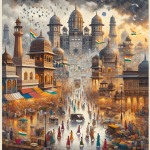
#ez-toc-container {
background: #f9f9f9;
border: 1px solid #aaa;
border-radius: 4px;
-webkit-box-shadow: 0 1px 1px rgba(0, 0, 0, .05);
box-shadow: 0 1px 1px rgba(0, 0, 0, .05);
display: table;
margin-bottom: 1em;
padding: 10px 20px 10px 10px;
position: relative;
width: auto;
}
.ez-toc-container-direction {
direction: ltr;
}
.ez-toc-list-level-1 a{
font-weight:bold;
}
Table of Contents
1. Introduction to Indonesia’s Archipelago
“`html
Welcome to the enchanting world of Indonesia, a mesmerizing archipelago that beckons travelers with its myriad of islands and a treasure trove of natural wonders. As a premier island-hopping destination, Indonesia offers a unique blend of pristine beaches, vibrant cultures, and diverse ecosystems that captivate the adventurous spirit. This vast nation, sprawled over Southeast Asia, is a paradise waiting to be explored, making it an ideal location for unforgettable island-hopping experiences.
Overview of Indonesia as a Premier Island Hopping Destination
With over 17,000 islands, Indonesia is the largest archipelago in the world. Each island possesses its own charm and allure, offering visitors a rich tapestry of experiences that range from peaceful retreats to exhilarating adventures. From the famous Bali and Lombok to the lesser-known gems like Raja Ampat and Flores, the options for island hopping are virtually limitless.
Indonesia’s strategic location between the Indian and Pacific Oceans provides the perfect backdrop for sea travel, inviting tourists to explore its myriad paths by water. The interconnectedness of the islands with well-established ferry routes and chartered tours further enhance the ease of traveling between destinations, allowing tourists to immerse themselves in the vast seascape and embrace the unique vibe of each island.
The Diversity and Richness of Indonesia’s Islands
Indonesia is a melting pot of cultures, languages, and landscapes. The diversity found within its borders makes it stand apart from other island destinations. Here is an in-depth look into what makes Indonesia’s islands so captivating:
- Cultural Diversity: Each island has its own distinct heritage and tradition. From the ancient temples of Java to the vibrant festivals of Bali, the cultural tapestry of Indonesia is rich and varied.
- Natural Beauty: The islands boast stunning beaches, lush rainforests, and towering volcanoes, providing a picturesque setting for nature lovers.
- Marine Biodiversity: Indonesia is home to some of the world’s most renowned dive spots. The coral reefs of Komodo and Raja Ampat are teeming with exotic marine life, making them a diver’s paradise.
- Flora and Fauna: Indonesia’s unique ecosystems support an array of wildlife, including the Komodo dragon, orangutans, and numerous endemic bird species.
These elements combine to create a unique experience for tourists eager to explore the uncharted territories and hidden treasures scattered throughout the Indonesian archipelago.
Importance and Benefits of Island Hopping Tourism in Indonesia
Island hopping tourism is not merely a journey of adventure; it’s an integral part of Indonesia’s sustainable tourism development. Here are the primary reasons why island hopping is vital to Indonesia’s economy and environment:
- Economic Growth: Tourism brings significant revenue and supports local economies by creating jobs and promoting traditional crafts and cuisine.
- Community Development: It fosters community engagement and infrastructure development, enhancing the quality of life for residents.
- Environmental Conservation: Responsible tourism initiatives help protect Indonesia’s natural resources and promote sustainable practices across the islands.
- Cultural Exchange: The influx of tourists encourages cultural exchange, allowing both locals and visitors to broaden their perspectives.
As travelers flock to Indonesia’s islands, they contribute not only to their personal growth and enjoyment but also to the greater good of preserving the cultural and environmental heritage of this extraordinary destination. By promoting sustainable tourism practices, Indonesia ensures that future generations can continue to experience the magic and wonder of its islands.
In conclusion, Indonesia stands as a beacon for island hoppers. The diversity and richness of its islands back its status as a premier destination for such adventures. As island hopping gains traction, its importance in driving economic growth, community development, and environmental conservation becomes more apparent, ensuring that Indonesia remains a welcoming paradise for explorers and adventurers from all over the globe.
“`

2. Must
Indonesia, with its sprawling archipelago, offers some of the most stunning islands in the world. Whether you’re looking for exotic wildlife, tranquil beaches, or incredible dive sites, Indonesia’s islands offer an abundance of natural beauty and cultural experiences that are hard to surpass. Join us as we explore the must-visit islands within Indonesia’s vibrant archipelago.
Exploring Bali: The Heart of Indonesia’s Tourism
Bali is undoubtedly the crown jewel of Indonesian tourism. Known for its lush landscapes, intricate temples, and vibrant culture, Bali has something for every type of traveler. Here are some highlights:
- Ubud: The cultural heart of Bali, known for its rice paddies, traditional crafts, and the lush Ubud Monkey Forest.
- Seminyak: A chic beach destination with upscale resorts, fine dining, and lively nightlife.
- Tanah Lot Temple: This iconic sea temple is a must-visit at sunset for stunning ocean views.
With its mix of vibrant culture and natural beauty, Bali serves as an international hub for tourists and a spiritual sanctuary for many.
Komodo Island: Home to the Legendary Komodo Dragons
Komodo Island is part of the Lesser Sunda chain of Indonesian islands and is revered for its population of Komodo dragons, the world’s largest living lizard. A visit to Komodo National Park offers a thrilling experience for wildlife enthusiasts. Here’s what you can do:
- Trekking Tours: Guided treks lead you through the habitats of these prehistoric creatures providing an opportunity to witness them in their natural environment.
- Pink Beach: Known for its rare pink-hued sands, this beach is perfect for snorkeling and enjoying the vibrant marine life.
Komodo Island, a UNESCO World Heritage site, provides an unparalleled glimpse into Indonesia’s unique biodiversity.
Raja Ampat: A Diver’s Paradise
For those passionate about underwater adventures, Raja Ampat is a dream destination located off the northwest tip of Bird’s Head Peninsula in West Papua. Known for its marine diversity, this area is written into every diver’s bucket list. Key highlights include:
- Unmatched Marine Biodiversity: Home to over 1,500 species of fish and 600 coral species, Raja Ampat is celebrated for its vibrant underwater ecosystems.
- Misool Island: Ideal for spotting manta rays and other remarkable marine creatures.
- Wayag Islands: Known for breathtaking landscapes of coral islets amidst turquoise seas.
Diving in Raja Ampat is like swimming in an aquarium, providing a surreal experience that divers across the globe cherish.
The Hidden Charms of Flores
Flores is an island less traveled but offers exquisite natural wonders and cultural experiences. From its multi-colored crater lakes to tribal traditions, Flores remains a hidden gem. Here are the hidden charms you must explore:
- Kelimutu National Park: Famous for the tri-colored crater lakes that change hues due to volcanic activity.
- Bena Village: Step back in time in this traditional village, offering insights into the customs and lifestyle of the Ngada people.
- Riung 17 Islands Marine Park: Located off the north coast, this is a haven for snorkeling and exploring untouched beaches.
Flores, with its unspoiled landscapes and rich cultural sites, offers an authentic slice of Indonesian life.
Lombok: Adventure and Serenity Combined
Lombok is an island that embodies a blend of adventure and serenity, often seen as Bali’s quieter sister. Here are some attractions you shouldn’t miss:
- Mount Rinjani: Embark on a challenging hike to the summit of one of Indonesia’s volcanoes for sunrise views that are simply breathtaking.
- The Gili Islands: These beautiful islands are perfect for relaxing, enjoying pristine beaches, and vibrant nightlife.
- Selong Belanak Beach: Known for its soft sands and excellent surfing conditions, particularly suitable for beginners.
Lombok’s diverse offerings of activities make it an ideal destination for travelers seeking both action-packed and tranquil experiences.
Indonesia’s archipelago, with its diverse islands, offers an endless array of natural beauty and cultural richness. From the luxurious lands of Bali to the incredible biodiversity of Komodo and Raja Ampat, the charms of Flores, and the adventurous spirit of Lombok, there truly is something for everyone. Pack your bags and discover the mesmerizing islands of Indonesia, where every destination promises unforgettable experiences.

3. Planning Your Island Hopping Adventure
Planning an island hopping adventure in Indonesia is an exciting endeavor, offering a mesmerizing blend of turquoise waters, vibrant cultures, and stunning landscapes. Whether you’re yearning for the tranquil beaches of Bali, the mystical temples of Java, or the rugged beauty of Flores, this guide will equip you with essential insights to make the most of your journey.
Best Time to Visit Indonesia for Island Hopping
Choosing the ideal time for your island hopping adventure in Indonesia is crucial for a seamless experience. Generally, the best time to visit is during the dry season, which runs from April to October. This period offers more predictable weather, calmer seas, and optimal conditions for inter-island travel.
- April to June: The shoulder season offers pleasant weather, fewer crowds, and vibrant natural beauty. It’s an ideal time for those seeking a more tranquil experience.
- July to August: These months align with the peak tourist season. While the weather is excellent, be prepared for bustling attractions and higher prices, particularly in popular destinations like Bali and Lombok.
- September to October: Another shoulder period, offering warm weather and fewer tourists. It’s perfect for travelers looking to explore at a leisurely pace.
Keep in mind that weather patterns can vary significantly across Indonesia’s expansive archipelago, so it’s advisable to check local forecasts for each destination on your itinerary.
Transportation Options: Boats, Ferries, and Flights
Island hopping in Indonesia requires careful planning of transportation logistics. Each mode of transportation offers unique experiences and considerations:
- Boats:
Traditional boats or speedboats are popular choices, particularly for short distances.
- Speedboats: Ideal for short hops between nearby islands. They are fast but can be more expensive.
- Traditional Boats: Provide a more authentic experience and are typically less costly, though slower.
- Ferries:
Ferries are an economical option for longer journeys. They connect major islands and often accommodate vehicles, making them suitable for travelers wishing to take their own transport.
- Flights:
For inter-island travel over longer distances, domestic flights offer the quickest means of transport. Indonesia boasts numerous airlines with regular flights to key destinations such as Bali, Lombok, and Sumatra.
It is advisable to book transportation in advance, especially during peak tourist season, to secure availability and better rates.
Essential Tips for Smooth Sailing: Packing, Safety, and Local Etiquette
Packing Tips
- Essentials: Sunscreen, insect repellent, and a first aid kit are must-haves due to Indonesia’s tropical climate.
- Clothing: Lightweight, breathable attire is best. Consider modest clothing for temple visits.
- Gear: Snorkeling equipment may be handy for underwater explorations, though rentals are widely available.
Safety Considerations
- Travel Insurance: Always have comprehensive travel insurance that covers adventure activities.
- Emergency Contacts: Note down local emergency numbers and the contact info of your country’s embassy or consulate.
- Seasickness: Motion sickness is common; consider medication for longer boat rides.
Local Etiquette
- Respectful Behavior: Indonesians value politeness; a simple smile and thank you in Bahasa Indonesia (“terima kasih”) go a long way.
- Religious Sensitivity: Indonesia is home to a diverse religious landscape. Dress modestly and observe local customs, especially when visiting religious sites.
- Traditional Practices: Be open to experiencing local traditions, but always ask for permission before photographing people or participating in local activities.
Successfully planning your island hopping adventure in Indonesia requires a strategic approach to timing, transportation, and preparation. Embrace the diverse beauty of Indonesia’s islands, respect local customs, and enjoy a journey filled with unforgettable experiences and breathtaking vistas. Safe travels!
4. Experiencing the Culture and Cuisine of Indonesia
Indonesia is a vibrant tapestry of cultures and traditions, with each island offering its unique slice of cultural heritage and culinary delights. Island hopping in Indonesia is more than just a journey across breathtaking landscapes; it’s an immersive experience into the nation’s rich cultural tapestry. Travellers seeking to engage with both the cultural and culinary essence of Indonesia will find themselves amidst a diverse world of traditions, flavors, and festivities that are as varied as the islands themselves.
Engaging with Indonesia’s Rich Cultural Heritage
Indonesia is home to over 300 ethnic groups, each with its own customs, languages, and artistic expressions. This diversity is reflected in the country’s cultural practices and traditions, many of which have been preserved over the centuries. Whether you’re exploring the intricate architecture of the Borobudur Temple in Java or the traditional dance forms of Bali, Indonesia provides endless opportunities to engage with its rich cultural heritage.
- Traditional Architecture: Discover the unique architectural styles that vary from island to island, including the Minangkabau’s soaring rooftops and the Javanese sultanate palaces.
- Art and Craft: Explore local crafts such as Batik, a technique of wax-resist dyeing applied to cloth, and witness its intricate process in Java.
- Music and Dance: Experience the pulsating sounds of the gamelan in Bali or the traditional angklung bamboo music in West Java.
Savory Indonesian Dishes to Savor During Island Hopping
Indonesian cuisine is a flavorful adventure for the palate, characterized by the extensive use of spices, coconut milk, and rice. Each region boasts its signature dishes that reflect the local culture and history. As you hop from island to island, be sure to indulge in these savory Indonesian dishes:
- Nasi Goreng: This quintessential Indonesian fried rice dish is a must-try, often served with a fried egg and a variety of accompaniments like fresh vegetables, chicken, or seafood.
- Rendang: A spicy meat dish that originates from the Minangkabau ethnic group in West Sumatra, rendang is traditionally made with beef, simmered in coconut milk and an aromatic blend of spices until the liquid is absorbed.
- Sate: These skewered and grilled meat sticks are served with a rich peanut sauce and are a popular street food throughout Indonesia, with variations from chicken and goat to more exotic meats.
- Gado-Gado: Ideal for vegetarians, this salad consists of lightly boiled, blanched, or steamed vegetables and hard-boiled eggs, all served with a peanut sauce dressing.
- Babi Guling: A Balinese delicacy, this roasted suckling pig is marinated with a blend of traditional Balinese spices before being slowly cooked to perfection.
Participating in Local Festivals and Traditions Across Different Islands
Immersing oneself in local festivals and traditions offers a deeper connection to the cultural heart of Indonesia. Whether celebrating the harvest, paying homage to ancestors, or marking significant life events, festivals across the Indonesian archipelago are vibrant celebrations that encapsulate the spirit and communal values of each region.
- Nyepi in Bali: Also known as the “Day of Silence,” this Hindu celebration marks the Balinese New Year. On Nyepi, you’ll experience a day of complete silence and reflection as the island comes to a standstill.
- Waisak at Borobudur: Journey to the island of Java during Waisak, a significant Buddhist festival commemorating the birth, enlightenment, and death of Buddha. The ceremonies held at Borobudur Temple are mesmerizing, featuring processions and prayers.
- Toraja Funeral Rites: In Sulawesi, the Toraja people are known for their elaborate funeral ceremonies, which are significant cultural events involving the gathering of family, sacrificial rites, and traditional feasts.
- Pacu Jawi in West Sumatra: This traditional bull race is held after the rice harvest and is a thrilling spectacle of culture, tradition, and local athleticism.
Embarking on this cultural and culinary voyage through Indonesia offers more than just sightseeing; it invites you to connect meaningfully with the country’s diverse cultural landscape and delectable culinary tapestry.


